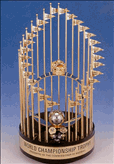World Series Series, Part 2 – Have a Backup
 This is Part 2 of a series and a follow-up post to Part 1. New posts will be made during game days of the World Series.
This is Part 2 of a series and a follow-up post to Part 1. New posts will be made during game days of the World Series.
When Plan A Requires a Plan B
Every game in the World Series is headlined by the starting pitchers as they come up in the rotation. Even throughout the season, when you get tickets to a game, one of the first things to ask is “who’s on the mound?”
Whether you’re a fan or a manager, your hope is that the starter is going to have his best stuff on game night. That’s the first line of defense needed to win games, but just in case, there’s always a backup. A reliever. Someone waiting in the wings who is the Plan B just in case the starter isn’t at his best.
In trading, we always want to have a stop loss in place for our trades. That’s the defense required to limit losses so that we can profit in the long haul with the winning trades we’ll have.
What If…
There’s nothing like being able to limit your losses, so make every effort to do so. Determine where you need to be out of a position, and stick with it. But don’t be afraid to have a disaster plan in place just in case. If your position gaps through your stop, what will you do?
Determining a ‘what if’ scenario at any given time in your trading is a good practice to be in. It’s also a great reminder to size your trades accordingly, because you don’t want everything riding on any one trade – ever. The idea of doing that might be exciting if you were to be right, but that’s a 2-way street and you absolutely must limit your downside if you’re going to stay in this game and survive.
Trade well out there!
Jeff White
President, The Stock Bandit, Inc.
Swing Trading & Day Trading Service
www.TheStockBandit.com
[tags]Stock Market, Day Trading, Stock Trading, Investing, Swing Trading[/tags]







Mark Wolfinger | Oct 24, 2008 | Reply
Limiting the downside and limiting losses are essential aspects of trading. I don’t see how anyone can be a successful trader without being a skilled risk manager.
I agree that it’s a psychological problem for many investors – when the stock gaps through their mental stop-loss price and now the loss is even larger than anticipated.
One way to play, yet still be protected is to trade options – using strategies that always have at least as many long options as shorts. Paying up for those options is difficult when option prices are so elevated (compared with historical prices – they may be fairly valued in this volatile market), but owning positions with limited risk guarantees that the investor survives a disaster in the marketplace.
TheStockBandit | Oct 26, 2008 | Reply
Hey Mark!
It’s always great to see you, thanks for stopping by to post this comment. You bring forth some excellent points, and I can’t agree more when it comes to ‘being a skilled risk manager.’
With the options, as long as one’s timeframe is at least several days for a trade, it’s not at all a bad idea to protect with them – especially during earnings season like right now. Because like you said, that’s how you guarantee that disaster is a defined-risk event.
Thanks again for your comments!
Jeff